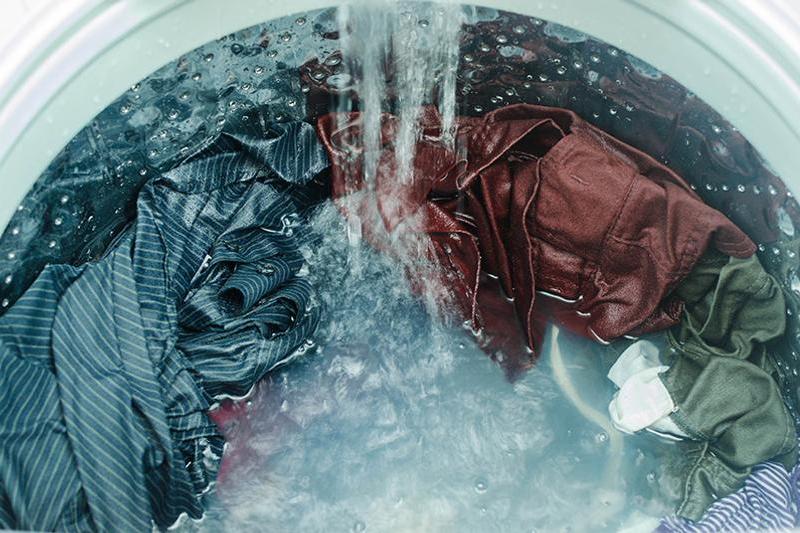Stemming the flow of microplastics with microbes
Enzymes could break down textile microplastics in wastewater.

'Plastics are a great material…We use them a lot because they are lightweight and low cost, using not too much energy. They have incredibly good water-retaining properties, something that has always been challenging for technology. And they are very durable and expand the shelf-life of food,' kicked off Dr Jose Jimenez Zarco, Reader in Synthetic Biology at Imperial College London, UK, at the launch of his paper on Using microbes to remove microplastics from wastewater and sewage sludge.
But their durability means they also slowly degrade in the environment. 'They are absolutely everywhere,' Zarco said, shifting the focus from the large to the super small.
Microplastics are smaller than 5mm but can be far smaller and measured in nanometres. While we are more familiar with larger plastic waste weathering into smaller pieces, an important source of microplastics contamination is from textiles as they are washed and particles are released into wastewater systems, accumulating in sludge.
In countries like the UK, organic fertiliser is made from this sludge waste. Zarco’s paper notes that, in 2020, water companies in England produced more than 800,000t of sewage sludge from urban wastewater. More than 90% of this is spread on agricultural land as a fertiliser and soil conditioner.
Zarco referred to a 2022 study published in Science of The Total Environment – Investigation and analysis of microplastics in sewage sludge and biosolids: A case study from one wastewater treatment works in the UK. It discovered how the sludge from one wastewater treatment plant is akin to spreading 20,000 bank cards on fields every month, and mentioned how there is currently no UK legislation defining safe limits for microplastics in sludge and soils.
His team at Imperial is collaborating with groups at other universities to investigate microbial activities and are proposing these micro-enzymes can remove microplastics from wastewater.
Their aim is to integrate plastic-degrading micro-organisms and enzymes into the biological stages of water treatment. Zarco notes that enzymes are already widely used commercially for septic tanks to enhance organic waste degradation, limiting new infrastructure costs.
The briefing paper mentions the enzyme from firm Carbios, which reports more than 90% PET degradation efficiency over 10 hours. C-ZYME has been implemented for the depolymerisation of a PET pipeline on an industrial scale, using a 20m3 reactor to depolymerise 2t of PET in a single cycle. This can be reportedly used to treat mixed PET wastes.
The Imperial group believes this enzyme could be scaled up for use to treat wastewater. Although the briefing paper clarifies that only polyester microplastics – 11% of the total microplastic burden – could currently be treated with this method.
Their recommendations are to understand microplastics better through surveillance, establish safe levels of microplastics in the environment for human health – if there is such a thing – and develop technologies such as enzymes to remove microplastic pollution.
Andy Pickford, Director for the Centre of Enzyme Innovation at the University of Portsmouth, UK, spoke at the event about the importance of standardising ways to measure plastics. He called for consistency to enable different areas to be surveyed reliably and reproducibly, and to determine whether interventions are improving the situation.
In response to Pickford’s concern about the by-products of breaking down PET, Zarco said that the monomers that are left are not a significant issue, as ethylene glycol tends to be degraded by microbial systems in the environment, while terephthalic acid is naturally present in the environment.
Other plastics, such as polypropylene, are more complicated. Zarco shared how they require a series of steps before the molecule is more accessible and so it is not as fast as with polyester. He also acknowledged that additives in clothes are another problem once they are released, and these processes need to be understood.
Jenny Hughes from UK Water Industry Research added that there are many hidden plastics remaining. While there is awareness of textiles, 'people don’t realise that suncream or make-up have them'.
Pickford called for innovations in polymer chemistry to give us materials with the properties we need but that do not last for centuries and leach into the environment. 'We need to think about undoing the hard work we have done since the 1950s to make plastics effectively indestructible to nature.'







